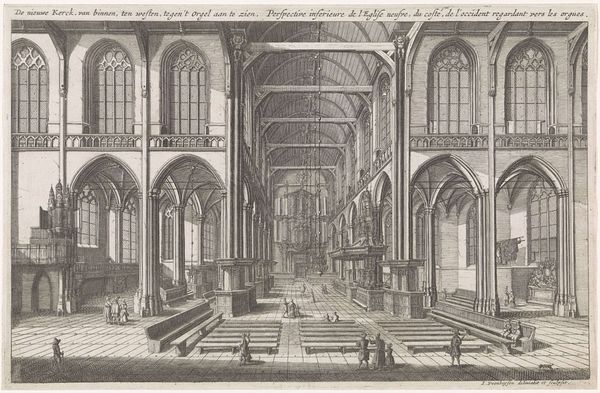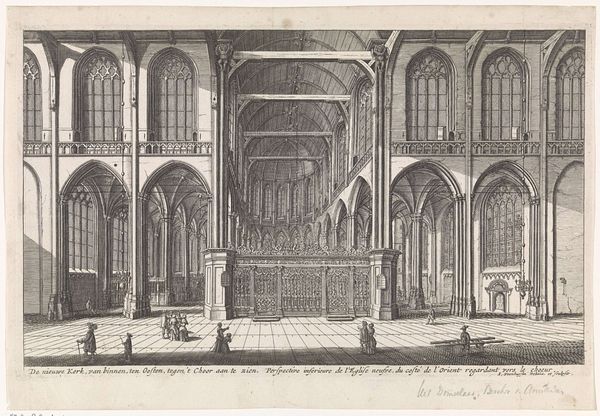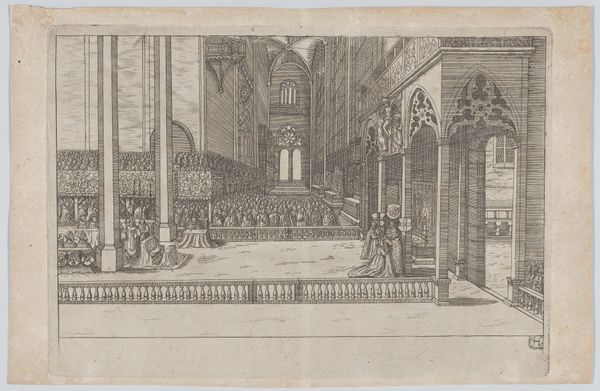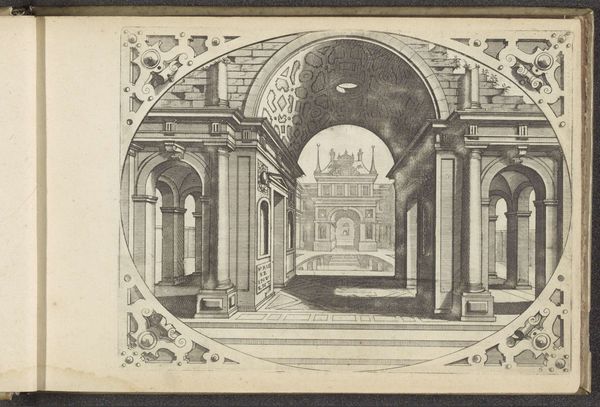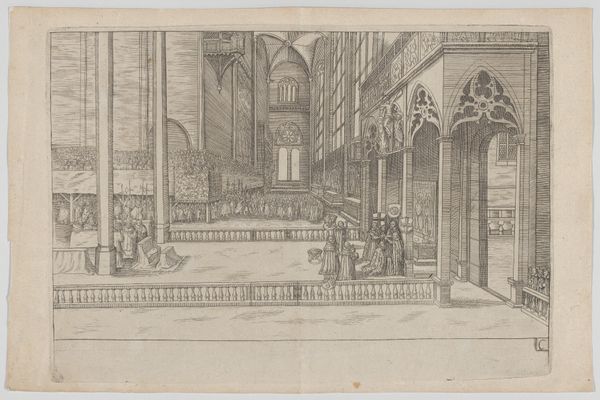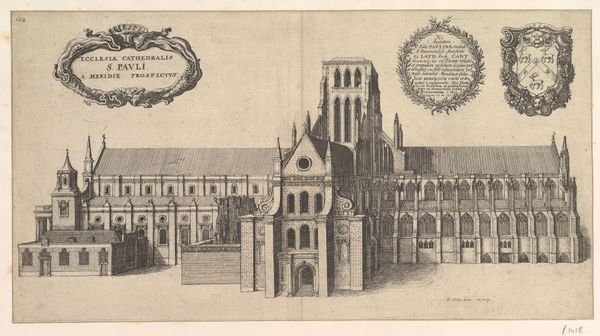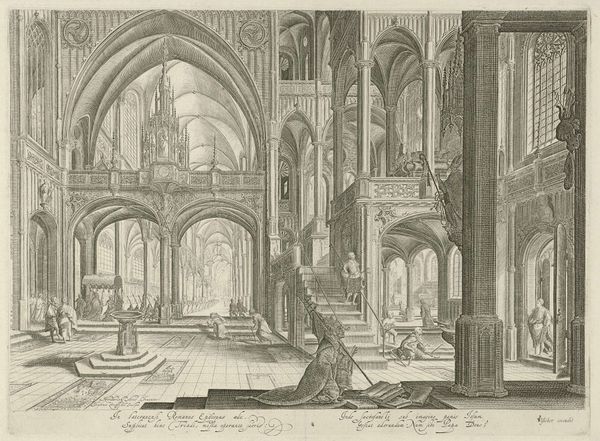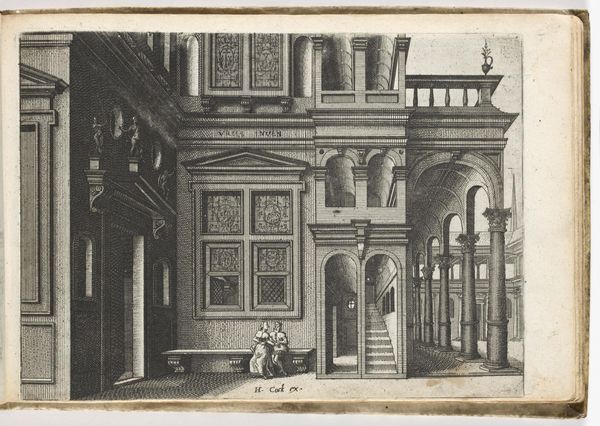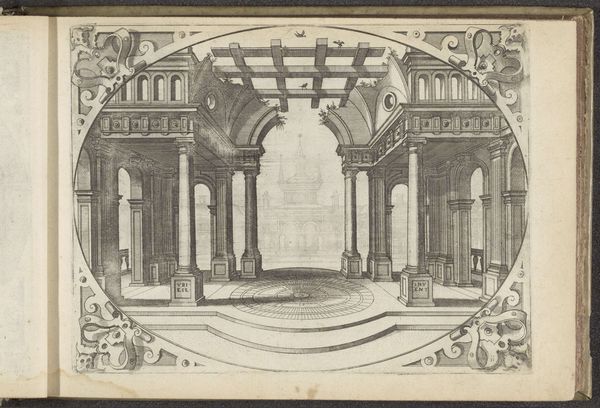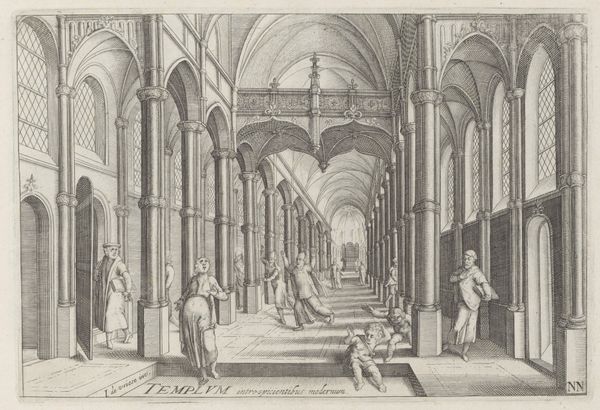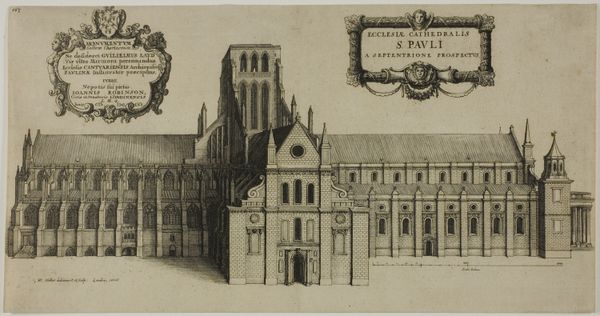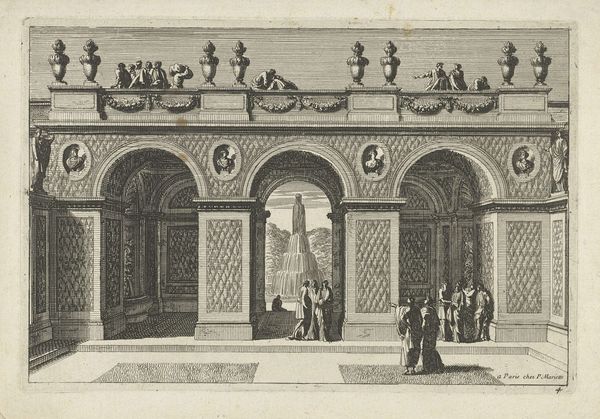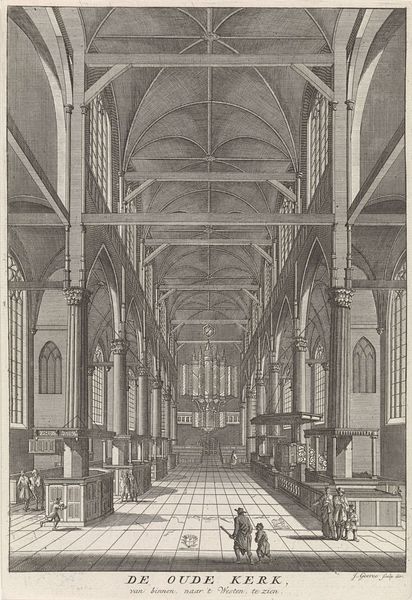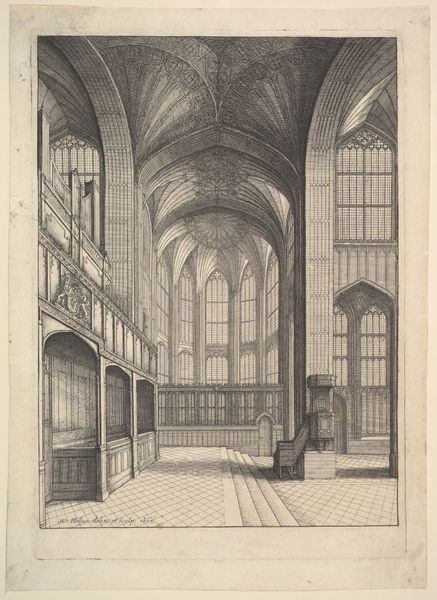
print, etching, engraving, architecture
#
light pencil work
#
quirky sketch
#
baroque
# print
#
etching
#
pencil sketch
#
sketch book
#
perspective
#
personal sketchbook
#
idea generation sketch
#
sketchwork
#
pen-ink sketch
#
sketchbook drawing
#
cityscape
#
storyboard and sketchbook work
#
engraving
#
architecture
Dimensions: height 197 mm, width 290 mm
Copyright: Rijks Museum: Open Domain
Curator: Looking at this etching, there's an almost oppressive formality, a severe grandeur achieved through the exacting detail. What are your immediate thoughts? Editor: The cross-hatching creates depth; the effect is stunning but sterile, like observing an architectural rendering. Before it burned, perhaps the engraving has something to say about the church and the cultural place it occupied for many English people. Curator: Indeed. What you're responding to is Wenceslaus Hollar’s "Kapittelhuis van de Saint Paul's Cathedral in Londen", which he created in 1658. He captures not just the structure but also, through light and shadow, the ideological weight of this center of power. Consider what such an iconic church represents, not just to the English, but across religious faiths? Editor: As an etching from 1658, it precedes the Great Fire, rendering it an invaluable artifact that gives modern scholars and theologians a solid idea of the interior, before Wren and his baroque style re-envisioned the great cathedral. Did Hollar consciously portray Saint Paul’s this way, almost devoid of human presence, to symbolize the looming crisis? Or does it reflect the austerity expected of the church? Curator: That reading is intriguing. The choice of printmaking democratizes access to the image but also carries political implications of dissemination and control. Moreover, Hollar’s technical prowess allows him to convey not just a physical space but the aura of the cathedral, laden with history and ecclesiastical dominance, at a critical moment. How does the absence of figures impact our understanding of institutional power in this pre-fire image? Editor: I read the quietness as an elegy, however unintentional. Consider its relationship to England's relationship to not only the crown, but Cromwell who oversaw a seismic period of change for many English men and women, not all welcomed changes for many religious minorities? Curator: I find myself compelled by the dialogue between Hollar's technical virtuosity and the engraving's historical implications. Thank you for this enriching exchange, I certainly have learned a lot, as I hope many others have as well! Editor: Thank you; looking at art through both its creation and reception always makes it exciting.
Comments
No comments
Be the first to comment and join the conversation on the ultimate creative platform.
